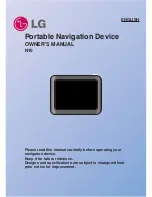
CAP 413
Radiotelephony Manual
Chapter 8 Page 1
Chapter 8
Emergency Phraseology
1
Distress and Urgency Communication Procedures
1.1
Introduction
This Chapter describes the characteristics of the VHF International Aeronautical
Emergency Service and equivalent services provided in the UK by Distress and
Diversion (D&D) sections on UHF. It also describes the RTF procedures which should
be used by civil pilots under the Aeronautical Mobile Service during an emergency in
the UK. Additional information is published in the UK AIP (GEN) section and AICs.
1.2
States of Emergency
1.2.1
The states of emergency are classified as follows:
a)
Distress
A condition of being threatened by serious and/or imminent danger and
of requiring immediate assistance.
b)
Urgency
A condition concerning the safety of an aircraft or other vehicle, or of
some person on board or within sight, but does not require immediate assistance.
1.2.2
The pilot should start the emergency call with the appropriate international RTF prefix
as follows:
a)
Distress
‘MAYDAY, MAYDAY, MAYDAY’
b)
Urgency
‘PAN PAN, PAN PAN, PAN PAN’
1.3
UHF and VHF Emergency Service
1.3.1
The UK has two Distress and Diversion (D&D) Sections located at the London and
Scottish Area Control Centres. They are manned by RAF control staff who are
assisted in the provision of an emergency service on the International Aeronautical
Emergency Frequency 121.5 MHz and on 243.0 MHz by suitably equipped civil and
military units and certain HM Coastguard stations. The service is available
continuously to pilots flying within UK airspace who are in distress, in urgent need of
assistance, or experiencing difficulties (i.e. temporarily unsure of position) which
could lead to a state of emergency. The service may also be available for practices
provided that no actual emergency is in progress on the UHF or VHF distress
frequencies. More information on the emergency service for civil pilots can be found
in the UK AIP (GEN).
1.3.2
The primary role of the D&D Sections is to provide military and civil pilots with an
emergency aid and position fixer service. Autotriangulation (DF) coverage on
121.5 MHz is available over most of the London FIR above 3000 ft amsl to aircraft
flying to the east and south of Manchester, apart from within approximately 40 NM
of Heathrow, where coverage is available above approximately 2000 ft amsl. In
respect of other civil aircraft incidents on VHF they rely for position fixing on DF
bearing information obtained by telephone from external units equipped with VDF.
This fixing procedure takes time and may require several minutes of concentrated
activity because it involves the manual plotting onto 1:250,000 charts of the bearings
received. The quality of the position fixes is determined by the availability of VDF
bearings, and thus, depends largely on the height of an aircraft and its distance from
the VDF stations. The coverage of the VHF fixing service is limited below 3000 ft
amsl; indeed, the ability to locate aircraft at low altitude by the use of VDF may be
severely inhibited (because of the effects of high ground) over much of Scotland,
31 March 2011
Содержание 413
Страница 1: ...CAP 413 Radiotelephony Manual Edition 20 www caa co uk Safety Regulation Group ...
Страница 2: ......
Страница 3: ...CAP 413 Radiotelephony Manual Edition 20 Safety Regulation Group 17 November 2011 ...
Страница 6: ...CAP 413 Radiotelephony Manual Amendment Number Amendment Date Incorporated by Incorporated on ...
Страница 10: ...INTENTIONALLY LEFT BLANK ...
Страница 18: ...INTENTIONALLY LEFT BLANK ...
Страница 20: ...INTENTIONALLY LEFT BLANK ...
Страница 68: ...INTENTIONALLY LEFT BLANK ...
Страница 126: ...INTENTIONALLY LEFT BLANK ...
Страница 162: ...INTENTIONALLY LEFT BLANK ...
Страница 170: ...INTENTIONALLY LEFT BLANK ...
Страница 178: ...INTENTIONALLY LEFT BLANK ...
Страница 206: ...INTENTIONALLY LEFT BLANK ...
Страница 248: ...INTENTIONALLY LEFT BLANK ...
Страница 254: ...INTENTIONALLY LEFT BLANK ...
Страница 264: ...INTENTIONALLY LEFT BLANK ...
















































